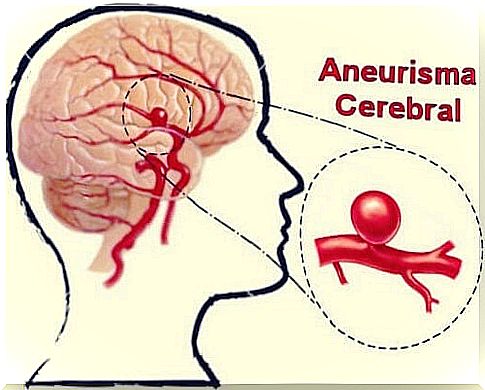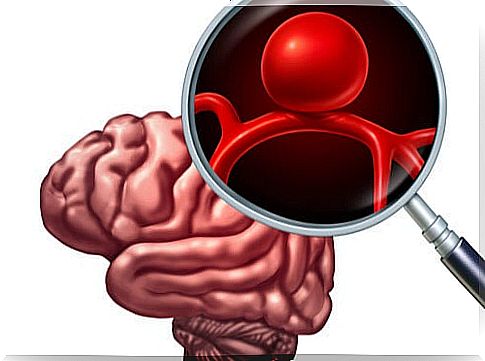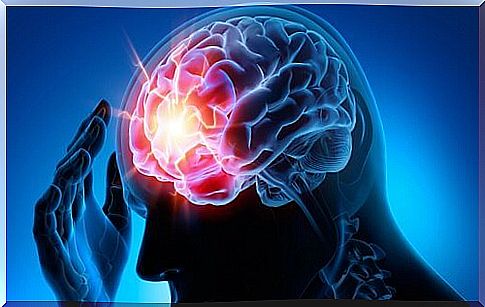Cerebral Aneurysm: Definition, Symptoms And Treatments

A brain aneurysm is a dilation of the wall of an artery in the brain. The most complex thing about these vascular conditions is that they usually have no symptoms. Thus, little by little, and without the person noticing, that area is bulging with the consequent risk that it will end up breaking. The consequences, if you don’t act quickly, can be fatal.
Most of us know someone who has suffered from this delicate reality. There are those who, thanks to early detection, have been able to benefit from rapid intervention (such as classic embolization), in order to lead a normal life without major sequelae. Other patients, on the other hand, carry the effects of the ruptured aneurysm.
Be that as it may, there is one fact that we must not neglect. Although it is a condition that usually appears more frequently between 40 and 65 years of age, it can also manifest in young people and even children. Sometimes, certain genetic problems or arteriovenous malformations lead to the appearance of these dangerous changes in the cerebral arteries.
Let’s see more data below.

What is a cerebral aneurysm?
A cerebral aneurysm is a vascular disorder that can appear in an artery or vein in the brain. Blood flow accumulates in a segment and a dilation appears in a blood vessel, acquiring the shape of a balloon.
On the other hand, as explained in a study carried out by the department of surgery at the University of Oklahoma School of Medicine, the location of almost 85% of aneurysms is almost always the same: right in the base of the brain. Exactly in the circle of Willis.
Likewise, it is common that depending on their shape, size and location we can differentiate three types of brain aneurysms:
- Saccular or sacciform aneurysm : it appears in the wall of an artery. They are not congenital and develop throughout our lives. They are the most common.
- Fusiform. In this case we are facing an aneurysm much more complicated to detect and treat. Rather than being bulging in shape, they tend to affect much of the cerebral artery, creating a thrombosis.
- Dissecting aneurysm. This typology is less common and affects the younger population. They appear as the origin of various alterations such as hereditary problems, infections, arthritis, fibromuscular dysplasia, atherosclerosis, etc.
What are the symptoms of a brain aneurysm?
As we pointed out at the beginning, it is common for a brain aneurysm to be asymptomatic. Now, when they show obvious characteristics is when a break appears. It is at that moment when we must proceed to a quick action, hence we must take into account the following clues:
- Sudden and very severe headache. Many people describe it as the worst headache of their lives, something intense and paralyzing that causes a stiff neck, tearing in one eye and even paralysis of one of them.
- Likewise, vomiting and dizziness are common.
- Discomfort when seeing the light.
- Coordination and movement problems.
- Difficulty thinking clearly.
- Speech disorders (aphasia).
- Loss of consciousness
Diagnosis of aneurysms
Doctors generally have different scales to assess the severity of the brain aneurysm. The most common are the Glasgow scales (in case the person has lost consciousness) and the scale
- Degree of headache and neck stiffness.
- Drowsiness and degree of mental confusion.
- Appearance or not of hemiparesis (paralysis on one side of the body or face)
- Coma appearance, state of maximum severity and worse prognosis.
Likewise, and in case we have a family history, it is advisable to undergo checkups and diagnostic tests. The most common way to identify the presence of a brain aneurysm before it ruptures is as follows:
- Computed tomography.
- Cerebral angiography.
On the other hand, one aspect should be noted. Many people die without knowing that they have a brain aneurysm. That is, not all these cerebrovascular alterations end with a tear; the probability is not very high but as such, it can happen with the consequent risk.
Treatment
When treating a brain aneurysm, multiple factors are taken into account. The first is whether a breakage has already appeared or not.
The second is the size, location, age of the patient, and other associated neurological conditions. However, the good news is that if there is an early detection, the treatments are effective and a very complex surgery is not required, an endovascular approach is enough. These are the most common.
Endovascular Embolization
- The technique consists of introducing a small catheter through the patient’s groin, following the cerebral artery to the brain. Once there, the aneurysm is blocked.
- Use is made of stents , devices that control and channel these pathologies.
Brain Bypass
- The application of a cerebral bypass requires that the patient be admitted between three and five days. In this case, the intervention is a bit more complex than embolization, because it requires carrying out a small craniotomy to apply this bypass, which is intended to regulate and reduce abnormal blood flow to that artery or vein.

Surgical locking procedure
Finally, and in more serious cases, doctors may opt for an intervention that requires making an incision in the skull. However, the admission is short and the intervention simple. Titanium devices are inserted to channel and treat the aneurysm.
Be that as it may, all these treatments are highly effective if the aneurysm is not ruptured. It is clear that we are not always so lucky, that we are not always aware of their existence because these conditions are asymptomatic. However, it is necessary to keep this information in mind in all cases to be aware and know how to act.









